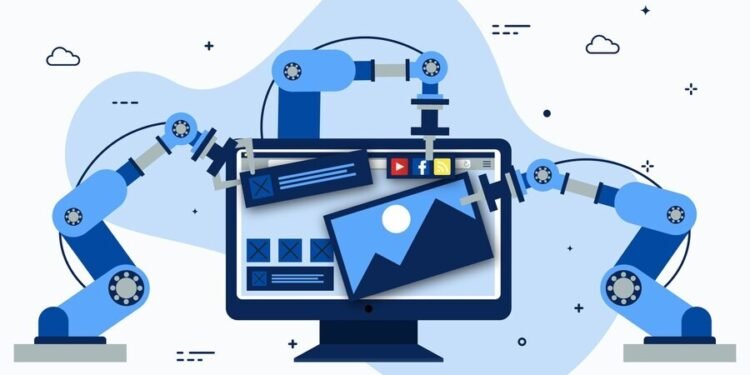Hyperautomation is a systematic process for business organizations to rapidly automate as many business and IT processes as possible. Hyper Automation works by using tools or platforms like Robotic Process Automation (RPA) and Artificial intelligence (AI) or Natural Language Processing (NLP), Machine learning, Business Process Management (BPM) intelligent business, integration platform as a service (PaaS), big data, cobots, chatbots, and other types of automation tools.
Implementation of all these systems makes the basis of Hyperautomation platform.
Accounts payable software (AP) is a cloud-based system, by which businesses can automate invoice operations for accounts payable. AP deals with time-consuming manual tasks such as invoice processing and payment reconciliation. Accounts Payable Software is used to automate this kind of task. Here, Hyperautomation increases the speed of transactions by autogenerating invoices and simplifying payment processes.
Accounts payable automate everyday business processes such as payment making, coding, purchase order matching, vendor management, reporting, and analytics, reducing human interference and eliminating errors.
Key Factors of Hyperautomation
Let us first understand the keys to Hyperautomation-
- Robotic Process Automation (RPA)
RPA is the process of using bots to get several essential numbers of tasks done. The most popular way in which RPA is used can be explained with a situation. Suppose we have a website where we want to do a repetitive task of data entry.
We can give a bot a JSON object or some data payload and it takes the information and does the process of filling out a web form, generating automated data input.
- Artificial intelligence (AI) or Natural Language Processing (NLP)
AI or NLP is the process of making systems understand human language. It can take commands through a sentence. The AI can comprehend the context being referred to and make necessary decisions based on the context. NLP can even create bots which increases the pace of automation.
- Machine learning (ML)
Machine learning is the process of using algorithms to teach computers to do arduous tasks without the help of any additional human hand.
- Business Program Management (BPM) and integration platform as a service (PaaS)
BPM is the discipline that organizations use to identify, design, execute, monitor, and optimize business processes.
A cloud-based platform, which provides tools and services for combining different applications and data sources is PaaS. Such automation can increase efficiency substantially.
- Big data
Big data is a combination of structured, semi-structured, and unstructured data, which is collected by organizations to extract information. It is also used in machine learning projects, predictive modeling, and other advanced analytical applications.
- Cobots
Cobots are a kind of collaborative robot. Collaborative robots are robots that can share tasks with humans. This brings a huge change in the production process. Employees can focus on more important tasks and invest time in the growth of the business.
- Chatbots
Chatbots are systems that can hold a conversation through speech or text with human beings. This system works by combining AI, NLP, and machine learning.
How Does Hyperautomation Work?
According to Gartner, RPA, AI, and Machine learning (ML), are mainly three systems that make the base of hyperautomation. Automation combines these 3 to give a robust solution to all mundane business problems. Automation has become possible in such areas of business management, where it was not even thought of some years back. The steps in hyper-automation-
- Gather information about processes, and find the right process to automate. The right process is repetitive, rule-based, and has a huge volume of transactions.
- The next step is to select the right system or platform to use in the automation. RPA is chosen for repetitive, simple tasks and AI and machine learning are used for complex tasks that involve decision-making as well.
- In the final step it implements the automation solution by combining the automation systems with the existing IT infrastructure and teaching the employees to use the new systems.
Why Should You Choose Hyperautomation?
Automating as many tasks as possible gives employees more time to focus on strategic and logistic work that requires a human brain. It helps employees to work on more important stuff thereby improving organizational efficiency and accuracy. Hyperautomation can help to improve data accuracy by reducing errors. It can help organizations to comply with regulations. It can help organizations make better decisions by providing them with more data and insights. Hyperautomation reduces waiting time and executes tasks with accuracy. This can help the business in providing a better customer experience.
Also Read: Exploring NetReputation: Unveiling the Reddit Verdict
















